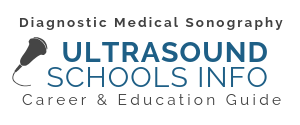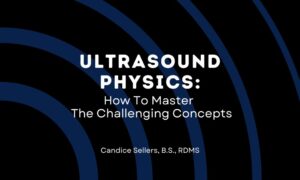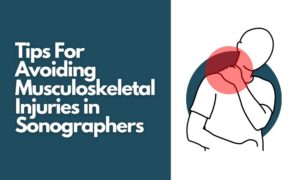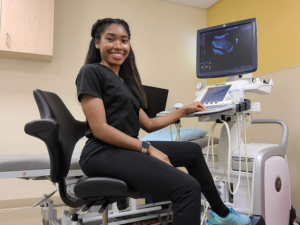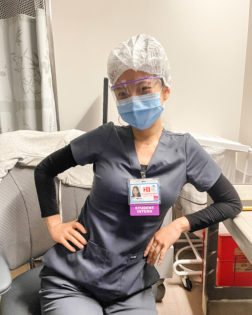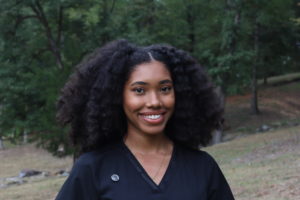Earlier this year, we received some advice from another ultrasound professor: Michael Keith, (B.S.R.T., R.D.M.S) who is the Diagnostic Medical Sonography Program Director at Rowan College at Gloucester County in New Jersey.
Director Keith had this to say:
“I would encourage all aspiring sonographers to make sure they pay strict attention in Anatomy and Physiology classes prior to getting into ultrasound education. I have found it to be a better indicator of a student’s success than the ACT or SAT.”
While Anatomy and Physiology may be a pre-requisite to apply for an ultrasound degree (or may also be included in the program) their concepts will carry through for the remainder of a sonographer’s career.
What is Anatomy and Physiology?
According to Dartmouth Medical School’s Ronan O’Rahilly, M.D., and his colleagues, anatomy is defined as “the science of the structure of the body” and it comes from the Greek word anatome which means “cutting up” as in dissection.
O’Rahilly and his colleagues (in their publication “Basic Human Anatomy”) continue by quoting the French physician Jean Fernel: “Anatomy is to physiology as geography is to history.” It is said that Fernel is the person responsible for coining the term “physiology” after all.
Fernel defined physiology this way: “So, if the five parts of a complete Medicine are set in order, physiology will be the first of all; it concerns itself with the nature of the wholly healthy human being, all the powers and functions” (Universa medicina, 1567).
So if we look at the digestive system for example, simply put, anatomy is the different parts of the digestive system (like the stomach and the esophagus); and physiology is how the digestive system works.
Highlighted programs for you
Las Vegas College
Las Vegas College
Lamson Institute
Lamson Institute
Houston Career Institute
Houston Career Institute
Why is it So Hard?
Naturally Anatomy and Physiology will come easy to some students more than others – there are a variety of learning styles, types of intelligence and interests in every classroom.
But generally speaking, Anatomy and Physiology may be challenging because there is a wealth of information to not only understand, but that also has to be remembered. Also there is a range of new, Latin and Greek-based terms to learn, that, on overwhelming days might have you screaming, “It’s all Greek to me!?!”
However, even if your Anatomy and Physiology class seems overwhelming and impossible to pass, let alone master, the situation is not hopeless. As follows are some tips to help you ace the course; and with your “never give up” attitude, you’ll develop some of your own personal tactics to succeed.
Tips to Ace Anatomy & Physiology
– Go to every class.
– Consult the syllabus and before each class look over the chapter (or pages provided by the instructor) that will be covered in the lecture.
– Use an audio recorder to record each lecture. While reviewing, listen to the lecture again.
– Bring your textbook to class and highlight the sections the instructor emphasizes.
– Set a regular time to review your class notes and textbook, so you are not cramming the night before the test. This could be done after each class, or several times a week to further instill and remember the concepts you are learning.
– Read the chapters on your own and take your own notes.
– Take the lecture and lab in the same semester so the classroom concepts are reinforced by the hands-on experiences.
– While reading the text and going over your notes, consult the appropriate diagrams (such as the diagram of the nervous system) at the same time.
– Study any handouts provided by the instructor, such as PowerPoint slides.
– Prepare flashcards for terms that require memorization. Take them with you and look at them while riding the bus, waiting for class to start, or whenever you have time to kill.
– Repeat terms and concepts that are hard to remember out loud.
Functions of the Kidney: A WET BED
*A-Acid base balance
*W-Water removal
*E-Erythropoesis
*T-Toxin removal
*B-Blood pressure control
*E-Electrolyte balance
*D-Vitamin D activation
– Make up some fun ways to remember hard-to-remember processes or names. For example, you can make up a quirky song; use existing mnemonics (such as “Virgil Can Not Make My Pet Zebra Laugh” to remember the names of the facial bones) or make up your own; draw a caricature; imagine a story, and more!
– Print off human anatomy diagrams that are unlabelled and fill in the blanks.
– Take advantage of any practice quizzes at your disposal, such as review questions found at the end of each chapter or last year’s tests.
– Find a study partner or group. Practice explaining different functions to each other out loud. You can also test each other with flashcards and go over review questions.
– Ask your instructor to further explain any parts of the curriculum you find confusing. You can also ask him or her for any tips they may have on how to ace Anatomy and Physiology.
